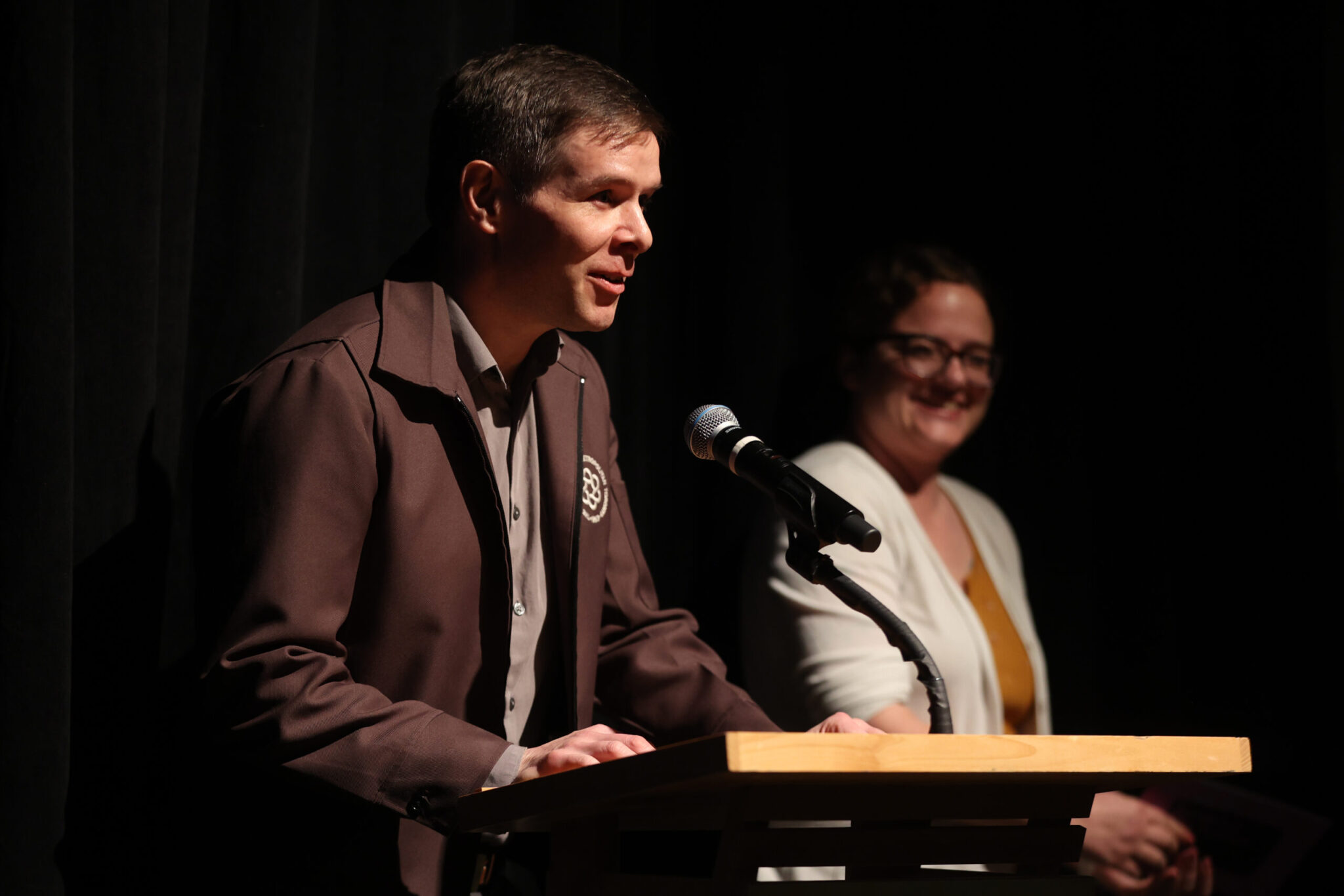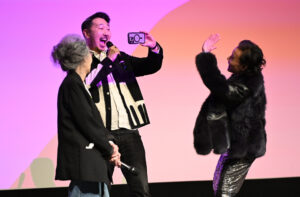PARK CITY, UTAH – JANUARY 22: Chris Nash attends the 2024 Sundance Film Festival “In A Violent Nature” premiere at the Library Center Theatre on January 22, 2024, in Park City, Utah. (Photo by Chad Salvador/Shutterstock for Sundance Film Festival)
By Stephanie Ornelas
Audience members at The Ray Theater were treated to a horror film that checks off every box the ultimate cinephile would expect and want from a slasher in Chris Nash’s In a Violent Nature, which screened at the 2024 Sundance Film Festival in Park City, Utah.
But it also defies those checked boxes at the same time.
In a change of pace and reversal of roles from the typical slasher narrative style, viewers found themselves walking alongside the killer instead of the victims, shedding new light — and blood — on a perspective not often, if ever, seen in many horror films.
Nash grew up on slashers, he tells audience members in the Q&A session following the screening. But it was clear he wanted to create something different.
When Johnny (Ry Barrett) is awakened after his mother’s necklace is removed from his burial site, it sets off a bloody domino effect with all of the quintessential players in horror flicks: the nearby resident, the sheriff who’s dealt with this before, and the vacationing group of stoners, jocks, and girls. But Nash finds a way to subvert expectations by having us at the killer’s side (or behind him) for 90 minutes.
This slow death trip that the audience embarks on with the killer sheds a new light on how slashers typically unfold, bringing a fresh take on the bloodbath that eventually ensues. Instead of a haunting score with jump scares left and right, we’re immersed in the world that the killer is about to bring pain to — always surrounded by nature and hearing only the sound of nature until the next kill. Each death becomes more creative and bloodier, and the lead-up to each death is almost similar in the sense that Johnny must always wait for the right moment.
“Tonally, this film is different,” says Nash. “Right from the very start, we were like, ‘We don’t want to have a soundtrack, we don’t want to have a score. We just want to let the forest be itself and have that tone carry the audience through.”
“When I go for a job, I don’t bring crutches. That’s what I feel about a lot of scores. They’re just there and they’re lifting up moments that really kind of aren’t heard.”
Most viewers might want Johnny to hurry up and get the job done, but the deliberate slow pace that Nash creates in this film brings a new feeling not often felt during most horror films — which makes you almost sympathize with the monster, eerily wanting more.








